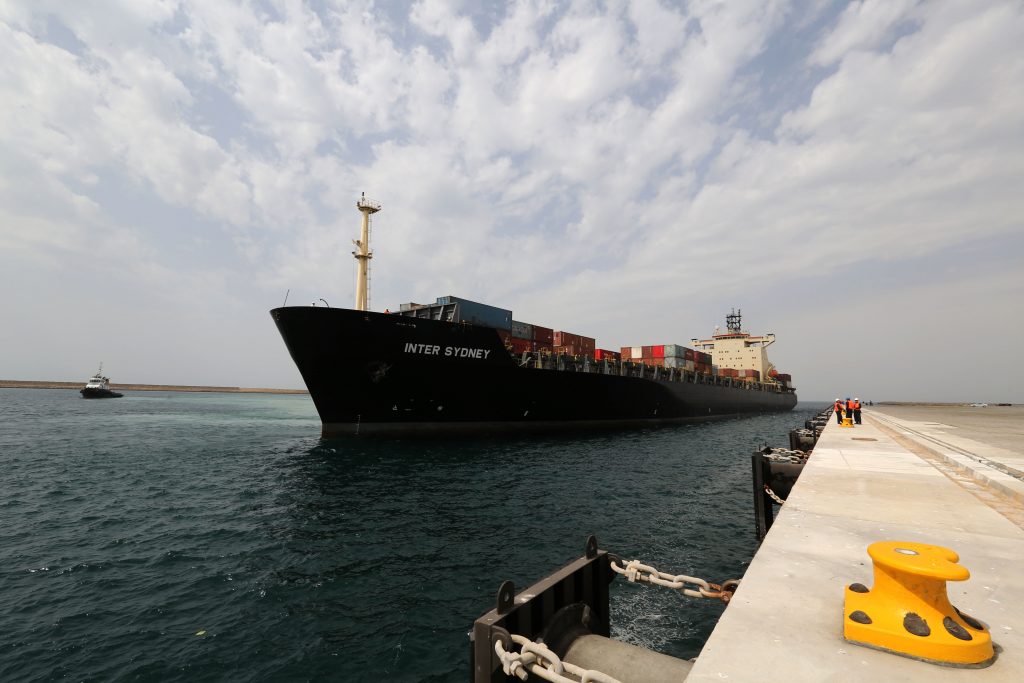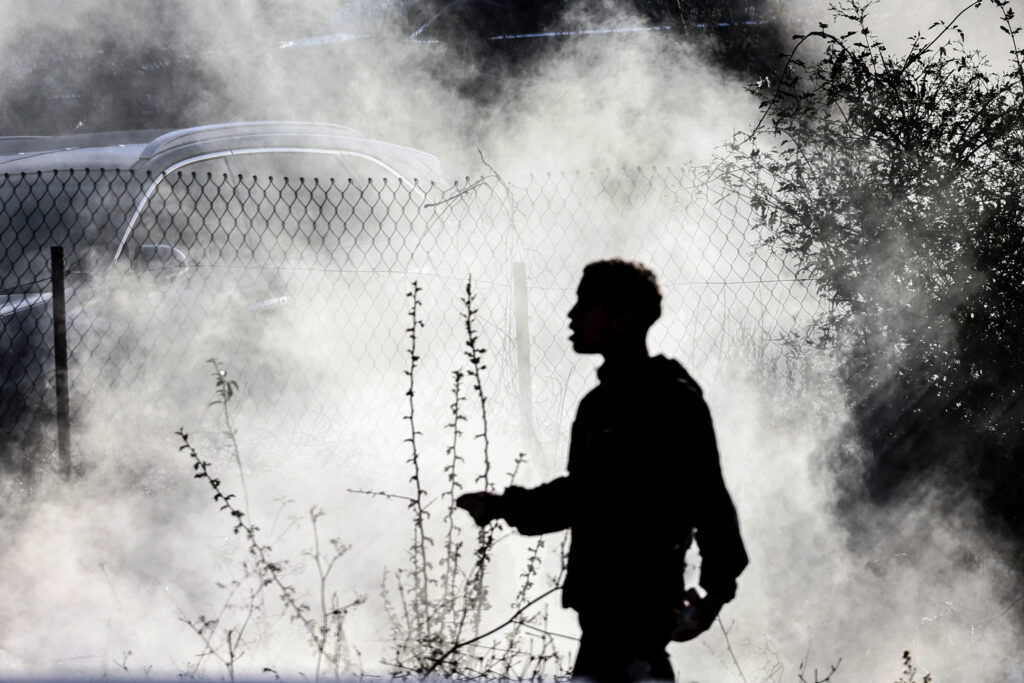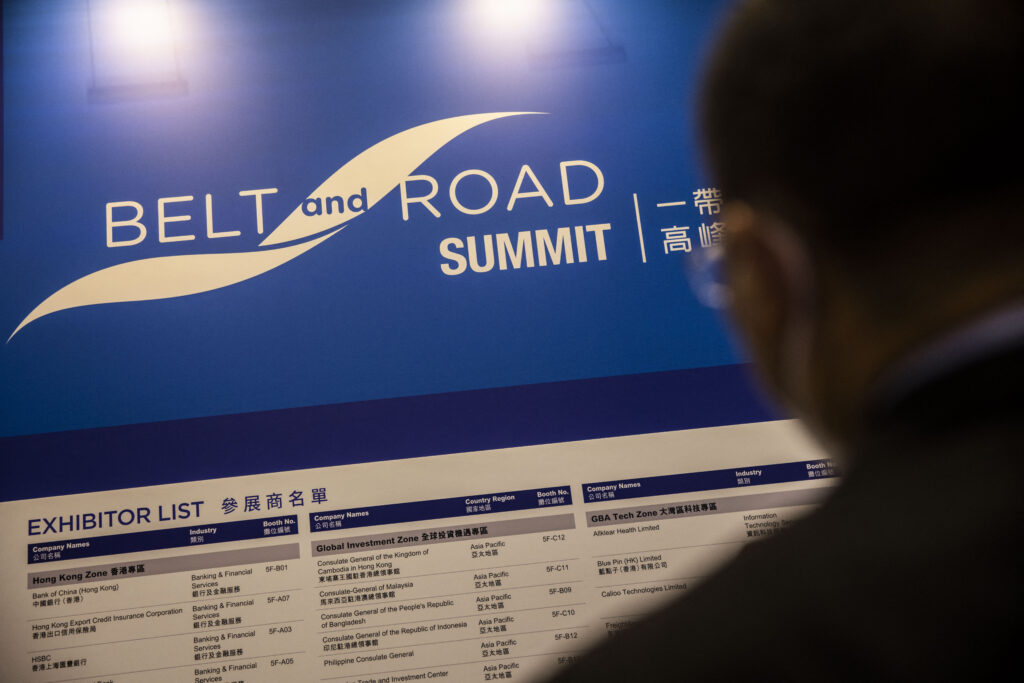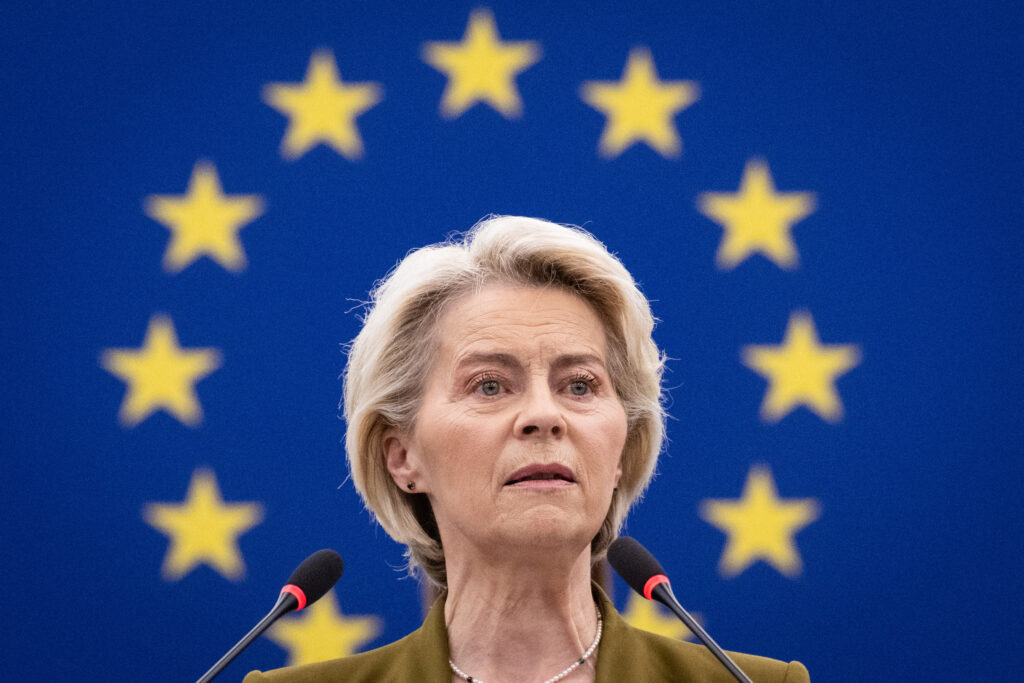With Europe and Asia growing closer, particularly through economic integration, it is no longer sufficient to see Iran as a Middle Eastern nation. This series of Insights will examine Iran’s bilateral relations from a Eurasian perspective, drawing out the understudied and underappreciated economic and political considerations that increasingly shape the Islamic Republic’s conception of its place in the international system and the power it is able to exercise in that system. This research project is a collaboration between MEI and Bourse & Bazaar, a London-based think tank focused on the economies of the Middle East and Central Asia, especially Iran.
The idea of engaging Iran through the lens of Eurasia is not alien to India’s foreign policy. Even as sanctions debilitate its energy dealings with Iran, India’s connectivity strategy through the Iranian port of Chabahar is designed to further its interests in Eurasia (particularly in Afghanistan and Central Asia). This paper traces India’s shifting priorities vis-à-vis Iran: reduced dealings in energy, limited security interactions and a renewed focus on land and maritime connectivity initiatives. It finds that — intentionally or not — the future of the India–Iran relationship is strongly intertwined with the Eurasian sphere, given its bet on connectivity.
CLICK HERE FOR THE PDF.
By Sumitha Narayanan Kutty
At first glance, 2019 was not a great year for India–Iran ties. India decided to roll back its imports of Iranian crude to zero to comply with fresh sanctions by the United States under the Trump administration.[1] The India–Iran relationship has traditionally banked on energy, which constituted a major portion of bilateral trade. Yet, despite this setback, Indian officials paid numerous visits to Iran over 2019 — the most significant being the one by External Affairs Minister S Jaishankar as the year came to a close. With a severely constrained energy relationship, was there enough substance left for India and Iran to work on?
In the past two decades, limited institutional engagement, divergent strategic interests and India’s rapprochement with the United States are some factors that have shaped India’s bilateral relations with Iran. This paper examines India’s shifting priorities vis-à-vis Iran and the emergence of connectivity, particularly the Chabahar port project in Iran, which helps link India to the economies of Afghanistan and Central Asia. This evolution cements India’s place in Iran’s Eurasian future.
New Delhi has traditionally viewed its dealings with Iran as an extension of its subcontinental interactions to its west; that is, it sees Iran as a part of its immediate neighbourhood extending beyond Pakistan and Afghanistan.[2] This framing sets apart India’s interactions with Iran from the popular paradigm situating the latter solely within the Middle East, in a hitherto unspecified de-hyphenation of sorts. The idea of viewing Iran through the Eurasian context is, therefore, not alien to Indian foreign policy. In fact, it has been the norm. India’s evolving engagement of Iran is also powered by this logic, with the Modi government’s emphasis on land and maritime connectivity projects through Iran to the economies of Eurasia.
Recasting India–Iran Ties Amid Shifting Priorities
India’s interactions with Iran are rooted in centuries-old social, political and economic ties, and the two states formalised diplomatic ties in 1950. Government officials often allude to these long-held “historical and civilisational links” even though the phrase papers over the limited nature of their contemporary engagement. The India–Iran relationship has always seen low levels of institutionalisation, with interactions limited to one or two areas of co-operation at any given time.[3] The two sides have often viewed each other with a certain amount of distrust. Events that have upset consecutive Indian governments include the decision by the shah of Iran, Mohammad Reza Pahlavi, to ally with the United States through the “Baghdad Pact” (or the Central Treaty Organisation, Cento) in 1955 and his statements in support of Pakistan against Indian “aggression” in the 1965 and 1971 India–Pakistan wars.[4] Even a very popular state visit by Indian Prime Minister Indira Gandhi in 1974 focused on a favourable crude oil agreement for India and did little to widen the ambit of engagement.
The 1979 Islamic revolution was viewed with cautious optimism in India as Iran’s attempt to break free from “outside Big Power influence”,[5] and New Delhi welcomed Iran’s subsequent withdrawal from Cento and its support for the Non-Aligned Movement. Despite some mutual interest in engagement, the new Islamist regime’s support for Pakistan on the Kashmir issue deterred better relations. The two did, however, manage to establish the Indo–Iranian Joint Commission in 1983 with a view to improving economic ties. The demise of the Soviet Union in 1991 prompted greater pragmatism in Indian strategic thought. In 1993, Narasimha Rao became the first Indian prime minister to visit Iran since the revolution, opening up further engagement through numerous bilateral visits. Iran reciprocated by softening its demands for Kashmir’s independence.
This decade set the stage for the warmest phase of India–Iran co-operation, which culminated in the Tehran declaration (2001) and the New Delhi declaration (2003). Both aimed to diversify ties into a multi-vectored strategic partnership with ambitious goals across the energy, defence and trade sectors as well as regional connectivity. The two stepped up political, security and intelligence coordination in Afghanistan, assisting the Northern Alliance in toppling the Taliban government in 2001. Soon after, however, India’s multiple votes at the International Atomic Energy Agency (IAEA) against Iran’s controversial nuclear programme and India’s negotiations with the United States on its own nuclear deal stalled further strategic engagement. For the next decade or so, Indian interactions with Iran were limited to energy trade, which was closely linked to and affected by sanctions against Iran by the Obama administration until 2015, when the Iran nuclear deal (the Joint Comprehensive Plan of Action or JCPOA) was concluded.
Since the Modi government first came to power in mid-2014, there have been three noteworthy movements in India’s Iran policy. These developments are largely congruent with the goals of previous administrations but also reflect the new influence of sanctions imposed after US President Donald Trump withdrew from the JCPOA in 2018.
Reduced Energy Trade
The first noteworthy movement was New Delhi’s efforts to reduce its dependence on Iranian crude even though Washington granted conditional waivers in the 2012 round of sanctions. This was prudent in hindsight, given that the Trump administration not only re-introduced sanctions after its withdrawal from the JCPOA but also proceeded to impose a harsher “zero imports” policy on all customers of Iranian crude, including its partners such as India. Until 2018, Iran was India’s third-biggest supplier after Saudi Arabia and Iraq. Bilateral trade between the two countries stood at US$17 billion in 2018–19 although a significant drop is expected in these figures for 2019–20, given India’s greatly reduced crude oil imports.[6]
India’s steady focus on diversification made its decision to comply with Trump’s sanctions relatively less painful than the adjustments it had had to make in the 2012 round of sanctions.[7] Diversification was helped by the changing realities of the energy market and India’s own relationships with some of the Arab Gulf states (mainly the United Arab Emirates and Saudi Arabia), which provided swift substitutes from within the Middle East. But, more significantly, India and Iran’s course of engagement over energy has never run smooth. This remained the case even after the Iran nuclear deal.[8] For example, India reduced oil imports from Iran in 2017 to signal displeasure over the delay in development rights for an Iranian gas field, Farzad B, which had been under discussion for over a decade.[9] India’s frustration over Iran’s bargaining tactics certainly played a part in its decision to forgo oil imports from Iran as a trade-off for concessions or benefits from the United States. Subsequently, the energy pillar in this relationship shrank significantly.
Limited Security Co-operation
The second shift in the India–Iran relationship was in the security dimension. Military co-operation between the two took the biggest hit in the past two decades following India’s decision to align its strategic and security interests with the United States. Defence diplomacy between India and Iran continues, with minor exercises and the odd ship visit. More significantly, a widening disconnect became evident as far as their strategic interests in Afghanistan were concerned. Unlike the Indians, the Iranians view the American presence in Afghanistan as part of the problem. Additionally, the Iranian regime’s policy of engagement with the Taliban and the role of the Islamic Revolutionary Guard Corps (IRGC) in terror strikes affecting India, most notably the attack on an Israeli diplomat in New Delhi in 2012, further weakened security ties.[10]
Renewed Focus on Connectivity Projects
The third noteworthy development in the India–Iran relationship is India’s prioritisation of transit and connectivity projects in its neighbourhood. China’s Belt and Road Initiative (BRI) certainly drives a part of India’s own connectivity spree but these project ideas pre-date the BRI. To India’s west, this drive has translated into renewed, sustained discussions on maritime and land connectivity to strengthen India’s economic ties with Eurasia. Such discussions involve Afghanistan, Iran and Oman, apart from a wider circle of Central Asian states and Russia. But Iran’s role is central to India’s ambitions in Eurasia, and the latter’s goal of upgrading the Iranian port of Chabahar is critical in this.
Chabahar: India’s Place in Iran’s Eurasian Future
India’s road to Eurasia lies through Iran. More specifically, India’s strategy involves developing Chabahar, which is located in the south-eastern Iranian province of Sistan-va-Baluchestan, and linking it to its own western ports (eg, Kandla in the state of Gujarat and Mumbai) and building new rail links connecting Chabahar to Afghanistan. The idea was first proposed during bilateral deliberations in 2000, based on the enduring logic that the most viable land route to connect India to Afghanistan, Central Asia, Russia and Europe is through Iran. Pakistan’s denial of access through its territory drives India’s interest in this venture. The proposal to develop Chabahar gained renewed momentum in 2012, when then Indian Prime Minister Manmohan Singh initiated discussions with Iran and Afghanistan. Despite sanctions against Iran at the time, the Obama administration backed the project, stating that it was grounded in the logic of promoting regional trade and furthering Afghanistan’s economic development. A second factor driving India’s interest in the project by this point was China’s investments in developing a deep-sea port at Gwadar in Pakistan, about 70 km east of Chabahar.
As soon as nuclear negotiations between Iran and the five permanent members of the UN Security Council plus Germany (the P5+1) took a positive turn in 2015, India kicked off serious discussions on Chabahar. A contract for the development of the port was finalised during Modi’s visit to Tehran in May 2016. Modi and his Iranian counterpart, Hassan Rouhani, signalled that strategic connectivity projects would define the India–Iran partnership in this phase of renewed engagement after the JCPOA.[11] According to the original terms of the Chabahar contract, India would spend US$500 million to develop and upgrade two existing berths into container and multi-purpose cargo terminals and close to US$85 million to equip and operate them under a 10-year lease.
What both countries did not anticipate at the time was Trump’s election as US president that same year. With it came the disintegration of the JCPOA and, by mid-2018, the reinstatement of sanctions against Iran. In a significant move, Washington granted New Delhi an exemption to the Chabahar project even as it demanded that India completely halt crude oil imports from Iran. However, American verbal assurances on the exemption of the Chabahar project did not translate into positive movement on the ground.
Setbacks to Original Port Plans
Chabahar’s development was not proceeding according to India’s original plans owing to the risks of doing business in Iran.[12] First, the contracts that were awarded to foreign firms (Chinese, Italian and Finnish) for cranes and other port equipment could not proceed after banks refused to accept US verbal assurances regarding the exemption of Chabahar from sanctions. Second, the state-owned entity created to execute India’s foreign port projects like Chabahar — India Ports Global Limited (IPGL) — was unable to get an Indian private firm on board to operate the terminals on the short 10-year lease. A third challenge that India faced in particular was that the terms of the contract were changed by Iran in “very fundamental ways” at least three times in the first three years. Expressing his frustration on this matter before he assumed the position of external affairs minister, Jaishankar remarked: “In the case of Chabahar, I know we always like to beat up on ourselves. But to be very honest a lot of the problems were because the Iranians kept changing the terms of the agreement.”[13]
To combat the problems plaguing the project, India and Iran resorted to stopgap measures to sustain the port’s development. Iran upgraded a part of the port at its own expense by December 2017 and an inauguration ceremony was held with much fanfare, with leaders from India, Pakistan and Afghanistan in attendance. As far as the Iranian regime was concerned, this showcased Chabahar as a success story amid an increasingly acrimonious economic and political climate.[14] In a second stopgap measure, an Iranian port operator took over interim operation of the port in 2018 until an Indian firm was ready to step in.
The Modi government appears determined to not let the project slide into ignominy. Officials have maintained a dialogue with the Trump administration on the port’s significance, the need for continuing waivers and the real limitations of a verbal assurance on this matter. During his visit to Washington in December 2019, Jaishankar negotiated a written assurance from the United States on financial transactions pertaining to Chabahar in order to conclude much-delayed purchases of equipment.[15] If this indeed works, the deadlock would end and the port’s upgrade could proceed.
Connecting Chabahar to Eurasia
The success of India’s Eurasia strategy does not revolve only around developing Chabahar port. First, New Delhi launched a diplomatic push across the region to connect Chabahar by land to Afghanistan and Central Asia in the north and by sea to Oman in the south. This effort is critical to ensure the port’s viability and guarantee trade benefits to the Indian economy.
A simultaneous trans-regional conversation has ensued to connect Chabahar to existing and upcoming regional transit frameworks. The first such discussion revolves around a crucial piece of connectivity that is tied to the Chabahar project. When Modi and Rouhani endorsed the Chabahar contract in 2016, India, Iran and Afghanistan formalised a trilateral transit agreement at the same time. The three states hope to ease cross-border transit and transport regulations to fast track the movement of goods through existing roadways connecting Chabahar to the Afghan border town of Zaranj (via Zahedan). This route has been operational since October 2017, with Indian and Afghan shipments making their way from the port of Kandla to Afghanistan via Chabahar. Iran has also been developing a new railway route between the port and Zahedan, with some help expected from India down the line.
Second, the port is an integral part of India’s Central Asia policy. The inaugural India–Central Asia Dialogue was hosted by Uzbekistan in January 2019, with all Central Asian states in attendance, along with Afghanistan.[16] The Indian external affairs minister’s address here noted the country’s joint efforts with Iran and Afghanistan to develop Chabahar and highlighted the potential of the new routes to further connectivity and trade with Central Asia. India also encouraged Central Asian participation at the “Chabahar Day International Conference” held in February 2019 to boost the port city’s development.
A third larger regional framework that Chabahar will be plugged into is the “Ashgabat Agreement”, which India acceded to in 2018. The agreement facilitates the movement of goods between Central Asia and the Persian Gulf and the parties to it include Uzbekistan, Turkmenistan, Kazakhstan, Pakistan, Iran and Oman. In keeping with this focus, India has improved maritime connectivity with Oman and held trilateral deliberations with Iran as well.[17] Finally, Chabahar is also a key link in the International North–South Transport Corridor (INSTC), which when completed would become the shortest route between India and Russia.
India’s Eurasian strategy clearly depends on Iran, which is also New Delhi’s gateway to Central Asia.[18] As discussed previously, there appear to be two important elements to this evolving strategy. The first consists of hardware such as the Chabahar port project, which links the region physically to India. The Modi government believes the port is the “fulcrum of connectivity” to Central Asia and the answer to the lack of efficient overland transit routes.[19] The second element is the software that supports such tangibles, ie, political initiatives like the India–Central Asia Dialogue and economic capital in terms of lines of credit, buyers’ credit, etc, that India has extended to the region either bilaterally or through existing regional initiatives.
Setting aside the BRI, the Eurasian landscape reveals numerous competing initiatives — some less formalised than others — like the China-led Shanghai Cooperation Organisation (SCO), Russia’s Eurasian Economic Union (EEU) and the European Union’s new Central Asia strategy (2019). India became a full member of the SCO in 2017 and “welcome(s) greater participation of SCO” in the INSTC, for instance.[20] It also intends to negotiate a free trade agreement with the EEU.[21] New Delhi’s strategy, therefore, has been to further its own interests by coordinating and contributing to existing Eurasian ideas and institutions.
Conclusion
The contours of India’s engagement with Iran have certainly shifted away from energy. This change also signals the way ahead in their relationship. Their collaboration over connectivity projects is the sector that will work for India in the short-to-medium term. To be sure, the India–Iran relationship has not been without its moments of severe inconvenience for India on energy dealings and Iran’s regional behaviour. But India’s long-standing logic of viewing Iran as an extension of the subcontinent to its west adds to its strategy an interesting element of de-hyphenation from the rest of the Middle East, ie, the Arab Gulf States, thereby ensuring that some of its interests remain alive. Whether intended or not, the future of India’s engagement with Iran is strongly intertwined with that of the Eurasian sphere, given its bet on connectivity. As with most large-scale regional connectivity ventures, the pace remains slow but appears to be steering towards a stated end. The Chabahar port project, and its key role in the region’s transit frameworks, cements India’s place in Iran’s Eurasian future.
About the Author
Ms Sumitha Narayanan Kutty is an associate research fellow at the S Rajaratnam School of International Studies (RSIS), Nanyang Technological University, Singapore. She tracks India’s foreign and security policies across the Indo–Pacific with a special interest in the Middle East.
Image caption: A cargo ship sails through the Shahid Beheshti Port in the southeastern Iranian coastal city of Chabahar, on the Gulf of Oman, during an inauguration ceremony of new equipment and infrastructure on February 25, 2019. Photo: Atta Kenare / AFP
Footnotes
[1] Nidhi Verma, “India’s Nov oil imports down 6% from Oct — trade data”, Reuters, 23 December 23 2019. https://uk.reuters.com/article/india-oil-imports/table-indias-nov-oil-imports-down-6-from-oct-trade-data-idUKL4N28X2R8.
[2] This linkage is also reflected in the practice of India’s foreign policy. Most significantly, the Ministry of External Affairs includes Iran within its most critical division focusing on Pakistan and Afghanistan (“PAI” in short).
[3] This is in sharp contrast to India’s relations with the Arab Gulf states. Additionally, a mere 4,000 Indians live in Iran. Saudi Arabia and the UAE each hosts 3 million Indians.
[4] Sujata Ashwarya Cheema, India–Iran Relations: Progress, Problems and Prospects (New Delhi: KW Publishers Pvt. Ltd, 2016), 31.
[5] “Annual Report 1979–1980”, Ministry of External Affairs, Government of India, 22.
[6] Export Import Data Bank, Department of Commerce, Government of India, https://commerce-app.gov.in/eidb/iecntq.asp.
[7] The Modi government cautioned its refineries to reduce imports and take stock of the risks of doing business in Iran months before sanctions snapped back in November 2018. Nidhi Verma, “India preparing to cut oil imports from Iran after US action”, Reuters, 28 June 28 2018, https://in.reuters.com/article/india-iran-oil/exclusive-india-preparing-for-cut-in-oil-imports-from-iran-sources-idINKBN1JO18A.
[8] Sumitha Narayanan Kutty, “Rouhani’s visit a reality check for Iran–India relations”, Al-Monitor, 6 March 2018, https://www.al-monitor.com/pulse/originals/2018/03/iran-india-ties-rouhani-state-visit-chabahar-farzad-jcpoa.html.
[9] The field was exclusively assigned to an Indian firm, Oil and Natural Gas Corp (ONGC) Videsh Ltd., which discovered it in 2008. However, Iran opened it up to international bidding, claiming that the Indians failed to deliver on financial commitments. The Iran–Pakistan–India pipeline is a second venture rendered redundant owing to New Delhi’s security and financial concerns. Additionally, talks over a direct undersea Iran–India LNG pipeline remain stalled. Nidhi Verma, “India cuts oil import plans from Iran by a quarter over gas field row”, Reuters, 2 May 2017, https://www.reuters.com/article/us-india-iran-oil/india-cuts-oil-import-plans-from-iran-by-a-quarter-over-gas-field-row-idUSKBN17Y1DR.
[10] Neeraj Chauhan, “Cops name Iran military arm for attack on Israeli diplomat”, Times of India, 20 July 2012, https://timesofindia.indiatimes.com/city/delhi/Cops-name-Iran-military-arm-for-attack-on-Israeli-diplomat/articleshow/15263013.cms.
[11] “India–Iran Joint Statement: ‘Civilisational Connect, Contemporary Context’ during the visit of Prime Minister to Iran”, Ministry of External Affairs, Government of India, 23 May 2016, http://www.mea.gov.in/bilateral-documents.htm?dtl/26843/India__Iran_Joint_Statement_quot_Civilisational_Connect_Contemporary_Contextquot_during_the_visit_of_Prime_Minister_to_Iran.
[12] Data released by the Modi government in 2019 proved that India had not spent any of its allocated project funds between 2017 and 2019. Sumitha Narayanan Kutty, “India’s Iran port plans languish despite US waiver”, Bourse & Bazaar, 28 August 2019, https://www.bourseandbazaar.com/articles/2019/8/28/indias-iran-port-plans-languish-despite-us-exemption.
[13] Dinaker Peri, “Chabahar port project delayed due to Iran: Jaishankar”, The Hindu, 19 July 2018, https://www.thehindu.com/news/national/chabahar-port-project-delayed-due-to-iran-jaishankar/article24455469.ece.
[14] “Rouhani inaugurates port dubbed ‘International Gateway’”, Financial Tribune, 3 December 2017, https://financialtribune.com/articles/domestic-economy/77292/rouhani-inaugurates-port-dubbed-international-gateway.
[15] P Manoj, “Chabahar port: US gives ‘written’ assurance to India facilitating banks to fund $85 mn equipment purchase”, The Hindu Business Line, 25 December 2019, https://www.thehindubusinessline.com/economy/logistics/us-gives-written-assurances-to-india-in-a-big-push-to-chabahar-port-plan/article30393995.ece.
[16] Among the Central Asian states, Uzbekistan has shown particular interest in the Chabahar project. “Press Statement by EAM after First India–Central Asia Dialogue”, Ministry of External Affairs, Government of India, 13 January 2019, https://www.mea.gov.in/outoging-visit-detail.htm?30907/Press+Statement+by+EAM+after+First+IndiaCentral+Asia+Dialogue.
[17] Dipanjan Roy Chaudhury, “India, Oman sign maritime pact; foreign ministers of India–Oman–Iran meet in Muscat,” Times of India, 24 December 2019, https://economictimes.indiatimes.com/articleshow/72960154.cms?utm_source=contentofinterest&utm_medium=text&utm_campaign=cppst.
[18] Meena Singh Roy, “Iran: India’s Gateway to Central Asia,” Strategic Analysis 36, No. 6, 2012, 957–975.
[19] “Address by External Affairs Minister on the occasion of the launch of the India–Central Asia Business Council, FICCI”, Ministry of External Affairs, Government of India, 6 February 2020, https://mea.gov.in/Speeches-Statements.htm?dtl/32365/address+by+external+affairs+minister+on+the+occasion+of+the+launch+of+the+indiacentral+asia+business+council+ficci+february+06+2020.
[20] “Address by Secretary (West) during industry interaction with Mr Vladimir Norov, Secretary General, Shanghai Cooperation Organisation at FICCI”, Ministry of External Affairs, Government of India, 13 January 2020, https://mea.gov.in/Speeches-Statements.htm?dtl/32308/address+by+secretary+west+during+industry+interaction+with+mr+vladimir+norov+secretary+general+shanghai+cooperation+organisation+at+ficci+january+13+2020.
[21] “Russia hopeful of India’s free trade pact with EAEU”, The Hindu, 24 December 2019, https://www.thehindu.com/news/national/russia-hopeful-of-indias-free-trade-pact-with-eaeu/article30384075.ece.





